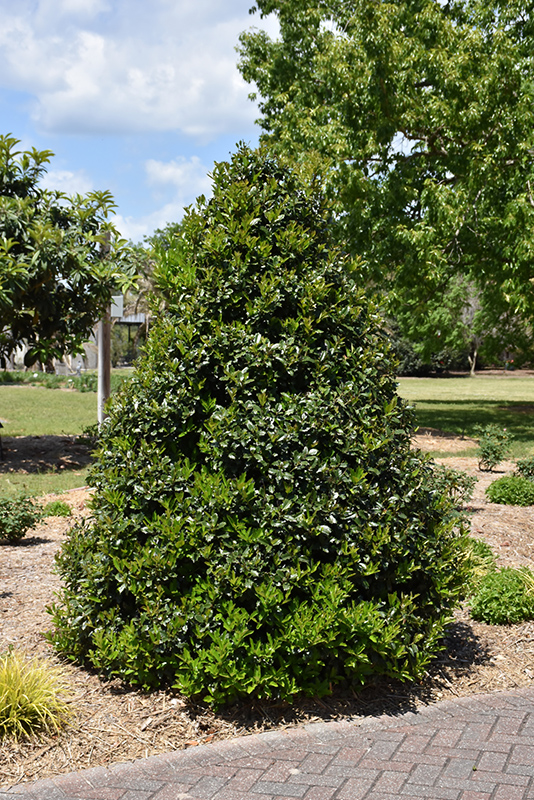Plant Finder
Height: 15 feet
Spread: 6 feet
Sunlight:
![]()
![]()
Hardiness Zone: 5
Other Names: Red Holly
Description:
This beautiful holly has a dense, narrowly pyramidal habit that is excellent for screening; this variety is self-fertile; glossy green leaves resemble that of an oak; abundant scarlet fruit in winter make this a great addition to the landscape
Ornamental Features
Oak Leaf™ Holly is primarily grown for its highly ornamental fruit. It features an abundance of magnificent scarlet berries in late fall. It has attractive dark green evergreen foliage which emerges coppery-bronze in spring. The spiny lobed leaves are highly ornamental and remain dark green throughout the winter.
Landscape Attributes
Oak Leaf™ Holly is a dense multi-stemmed evergreen shrub with a distinctive and refined pyramidal form. Its average texture blends into the landscape, but can be balanced by one or two finer or coarser trees or shrubs for an effective composition.
This is a relatively low maintenance shrub, and is best pruned in late winter once the threat of extreme cold has passed. It is a good choice for attracting birds and bees to your yard. It has no significant negative characteristics.
Oak Leaf™ Holly is recommended for the following landscape applications;
- Accent
- Mass Planting
- Hedges/Screening
- Naturalizing And Woodland Gardens
Planting & Growing
Oak Leaf™ Holly will grow to be about 15 feet tall at maturity, with a spread of 6 feet. It has a low canopy with a typical clearance of 1 foot from the ground, and is suitable for planting under power lines. It grows at a medium rate, and under ideal conditions can be expected to live for 50 years or more. This is a dioecious species, meaning that individual plants are either male or female. Only the females will produce fruit, and a male variety of the same species is required nearby as a pollinator.
This shrub does best in full sun to partial shade. It does best in average to evenly moist conditions, but will not tolerate standing water. It may require supplemental watering during periods of drought or extended heat. It is particular about its soil conditions, with a strong preference for rich, acidic soils. It is quite intolerant of urban pollution, therefore inner city or urban streetside plantings are best avoided, and will benefit from being planted in a relatively sheltered location. Consider applying a thick mulch around the root zone in winter to protect it in exposed locations or colder microclimates. This particular variety is an interspecific hybrid.


